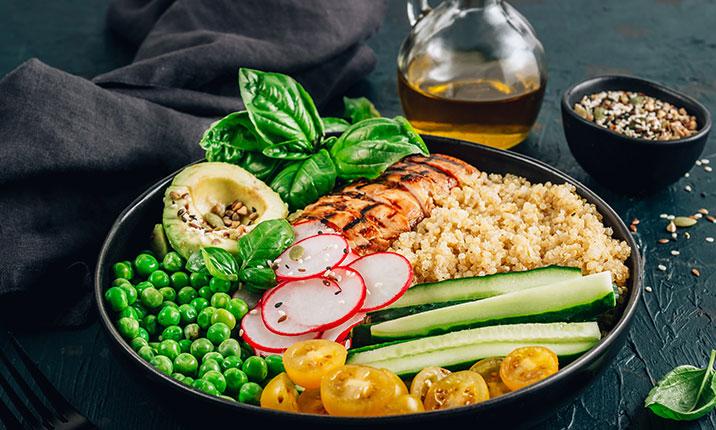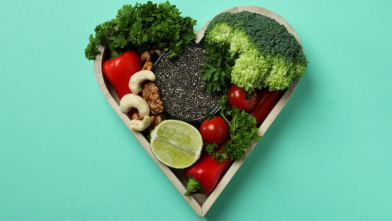But the truth is, there are many reasons why we should reduce or even eliminate red meat from our diets. One, there’s the environmental argument. Meat and dairy production cause 14.5 percent of our planet’s greenhouse emissions. Two, there’s the cost argument. “Meatflation” is real. You’ve probably already experienced sticker shock at the market, but wholesale beef prices are predicted to increase between 4 and 7 percent in 2022.
Perhaps the most significant reason to cut back on red meat, however, is our health. People who eat red meat are at an increased risk of death from heart disease, stroke, or diabetes. But reducing red meat intake has a protective effect against heart disease.
While giving up red meat may turn out to be a goal of yours in the future, how about starting out with small steps? There are a few approaches you can take:
- Limit your meals with red meat to two or three times a week.
- Switch to lean cuts and small portions.
- Revise how you approach including meat in your meals. Instead of centering dinner around a plate of broiled beef ribs or a steak, use meat as a flavoring in other dishes that are more plant forward.
You’ll be helping your health, your budget, and the planet.
Here are some ways to reinvent dishes that focus on ingredients other than red meat:
- Reduce the amount of meat called for in a recipe. Soups, stews, salads, stir frying, and casseroles are pretty flexible. Use half of the recommended amount and balance the rest with tofu, plant-based meats, beans, whole grains, or more hearty vegetables.
- Substitute red meat with turkey or chicken. Love meatloaf or chili? Use lean ground turkey or chicken and add chopped mushrooms to increase that meaty texture. Add chopped pieces of poultry to stews or soups that call for red meat.
- Eat beans, especially those grown in your region. They’re filled with protein, of course, but also add the heft we like in chili or stews. And many are delicious cooked as a main course with vegetables, from winter squash to fennel or tomatoes.
- Eat high-protein grains like quinoa, teff, wild rice, and buckwheat. They can be the base of a grain bowl to which you can add leftovers, seafood, or roasted vegetables along with a delicious sauce.
- Give tofu a chance. Its neutral flavor makes it a great partner to more flavorful, spicy, or aromatic ingredients. Tofu comes in several degrees of firmness, from being so soft it can replace dairy in mousse or pudding to extra firm and ready to broil or grill and smother in a thick tomato sauce. Add bite-size pieces to soups or stews.
- Try plant-based “meats” like seitan as a main dish or ingredient in a stir fry, grain bowl, or stew.
- Add mushrooms. Thick slices of shitake mushrooms have both a great meaty mouthfeel and an umami flavor. They’re perfect for a stir fry, soups, bowls, and stews. And we’ve all heard of grilled portobello mushroom burgers.
- Get inspired. Pick up cookbooks that refocus recipes to meatless or vegetarian dishes.








